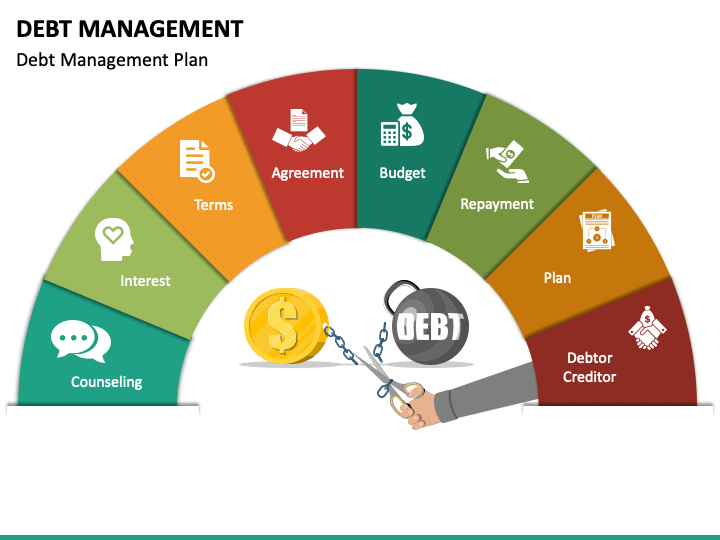Recognizing the Process of Financial Debt Combination: More Discussion Posted Here
Recognizing the Process of Financial Debt Combination: More Discussion Posted Here
Blog Article
Everything You Need to Learn About Creating a Tailored Financial Debt Administration Strategy
In the realm of individual money, designing a tailored financial debt management plan is usually the foundation of achieving financial stability and tranquility of mind. As you browse the intricacies of developing an individualized financial debt administration strategy, understanding the complexities of each step is key to your financial success.
Evaluating Your Present Financial Debt Situation
One must initially carry out a thorough evaluation of their present financial debt obligations before developing an effective financial obligation administration plan. Create a thorough list of each financial debt, consisting of the overall amount owed, passion rates, minimal monthly payments, and due days.
After compiling this details, compute your complete debt-to-income proportion by splitting your monthly debt repayments by your month-to-month revenue. Comprehending these facets of your financial situation will guide you in establishing a tailored financial obligation administration strategy tailored to your particular requirements and objectives.
Setup Financial Goals and Targets

When establishing financial objectives, it's important to be specific, measurable, possible, relevant, and time-bound (CLEVER) For instance, you might establish an objective to repay a specific quantity of financial debt within a specific timespan, such as reducing your credit report card balance by $5,000 in the next year - More Discussion Posted Here. By setting clear targets such as this, you can track your progress and stay motivated to achieve your debt administration purposes
Additionally, take into consideration prioritizing your financial obligations based on elements such as rate of interest, superior balances, and settlement terms. By concentrating on high-interest financial obligations initially, you can save cash in the lengthy run and accelerate your journey toward economic liberty. Bear in mind, everyone's monetary situation is special, so tailor your objectives and targets to fit your specific needs and scenarios.
Creating a Realistic Budget Plan
Crafting a distinct budget plan is a basic action in efficient financial debt management and financial preparation. A realistic budget serves as a roadmap for your monetary wellness, assisting you track your earnings, costs, and debt payments. To produce a practical budget plan, begin by detailing all your resources of revenue. This includes your wage, side rush profits, or any other financial inflows. Next off, magazine all your fixed expenditures such as rent or home loan, energies, insurance coverage, and car loan payments. Variable expenditures like groceries, home entertainment, and transport needs to likewise be included. Set apart in between demands and desires to prioritize important expenditures and determine locations where you can cut down.
When setting budget plan limitations, be honest with yourself about your investing practices and financial responsibilities. Allot a section of your income in the direction of paying off financial obligation while ensuring you have some funds for emergencies and cost savings. Regularly testimonial and change your spending plan as needed to remain on track with your financial goals and financial obligation payment plan. By adhering to a sensible budget, you can properly handle your financial obligation and job in the direction of a much more safe economic future.
Discovering Debt Repayment Techniques
After developing a practical budget, the following essential action in effective financial obligation management is to explore different financial debt repayment techniques. One typical approach is the snowball technique, where you focus on settling the tiniest financial debts initially while making minimal payments on larger financial debts. This method can aid construct momentum as you see smaller financial obligations being gotten rid of, offering inspiration to tackle bigger ones.
An additional technique is the avalanche method, which entails prioritizing financial obligations with the highest rates of interest. By targeting high-interest debts initially, you can lower the general amount you pay in rate of interest over time. This approach might be much more economical in the future, although it may take longer to see specific debts completely repaid.
Financial obligation debt consolidation is an additional choice our website where you incorporate several financial obligations right into a solitary lending with a reduced rates of interest. This can streamline your repayment process and possibly decrease the overall passion paid. Nevertheless, it's necessary to thoroughly consider the terms and costs linked with debt consolidation to ensure it's the best selection for your financial situation.
Surveillance and Readjusting Your Plan

Readjusting your strategy might entail reallocating funds to tackle high-interest financial obligations initially, negotiating with creditors for lower passion prices or much better repayment terms, or exploring additional revenue resources to expedite debt payment. As your financial circumstance progresses, your financial obligation administration strategy should adapt accordingly to remain effective. By remaining adaptable and aggressive in surveillance and adjusting your plan, you can optimize your initiatives in the direction of repaying your debts efficiently and achieving your economic objectives.
Conclusion
In final thought, producing a tailored financial debt administration plan involves assessing current financial debt, establishing economic objectives, developing a practical spending plan, checking out repayment techniques, and tracking and readjusting the plan as required. By complying with these steps, individuals can take control of their economic scenario and job towards becoming debt-free. It is essential to stay regimented and devoted to the strategy in order to accomplish long-term economic security.
One need to first conduct a detailed evaluation of their existing debt obligations before developing an effective financial obligation monitoring strategy.After developing a realistic spending plan, the following critical action in efficient debt administration is to check out numerous financial debt settlement methods - More Discussion Posted Here.To successfully handle your financial obligation, continual monitoring and modification of your financial debt management strategy are essential components for long-term financial stability.Changing have a peek at this site your plan may entail reapportioning funds to deal with high-interest financial debts initially, discussing with creditors for reduced passion rates or far better repayment terms, or exploring additional earnings resources to speed up financial obligation settlement.In conclusion, creating a customized financial obligation management strategy includes assessing current debt, establishing economic goals, producing a practical spending plan, checking out repayment techniques, and tracking and changing the strategy as required
Report this page